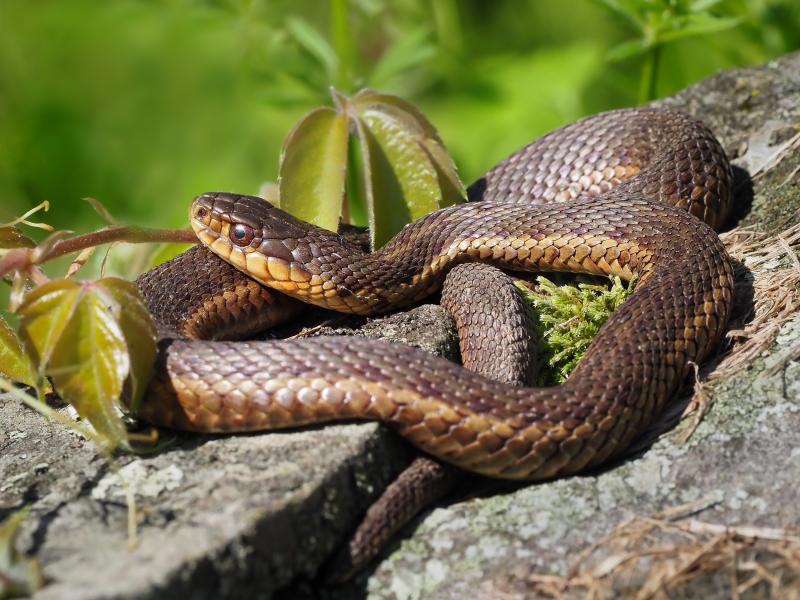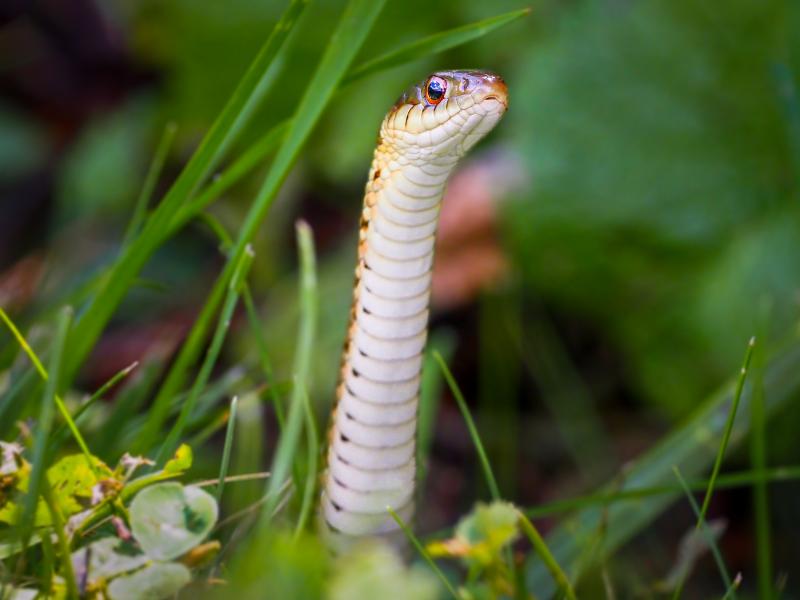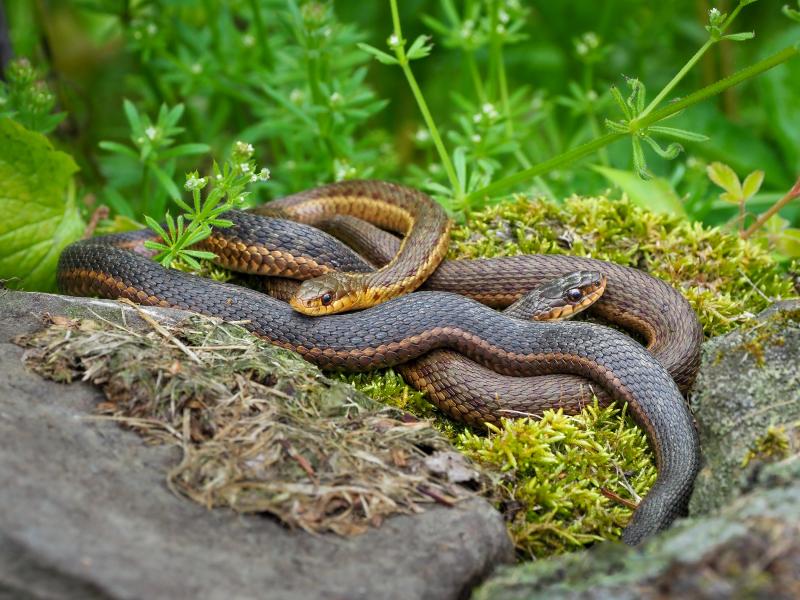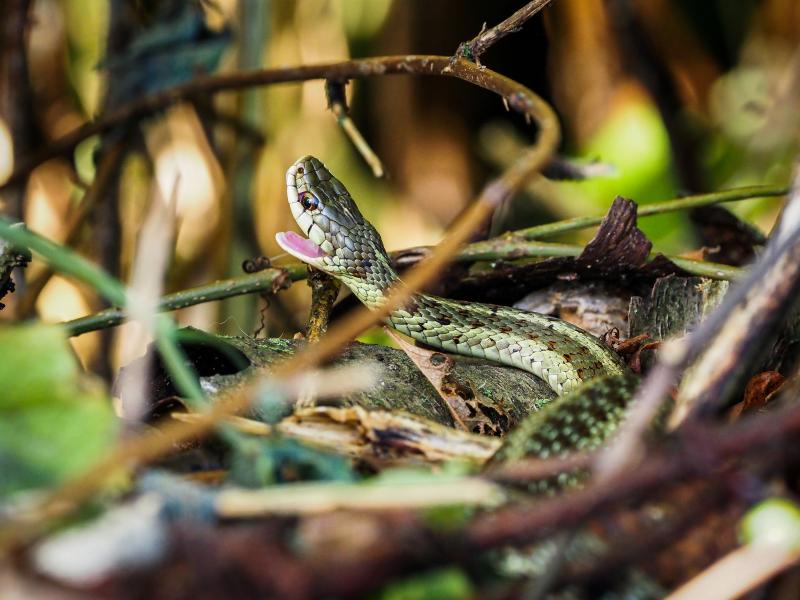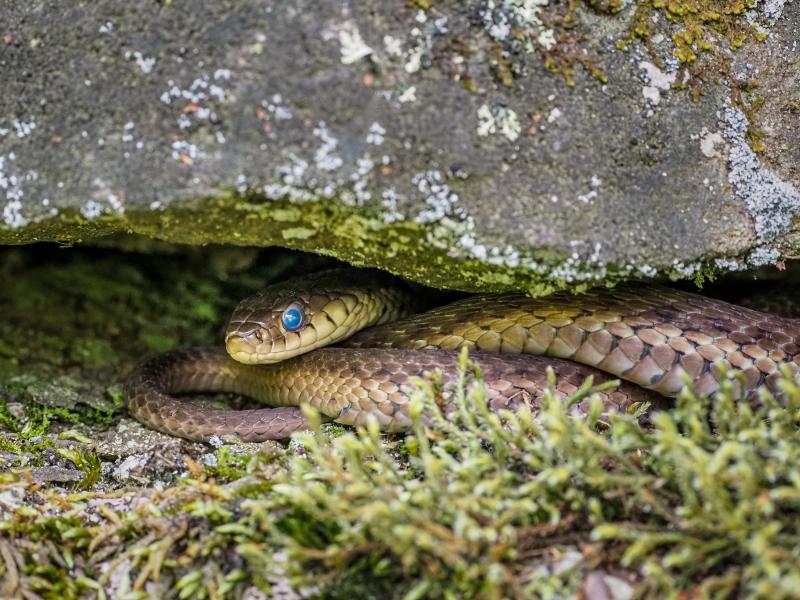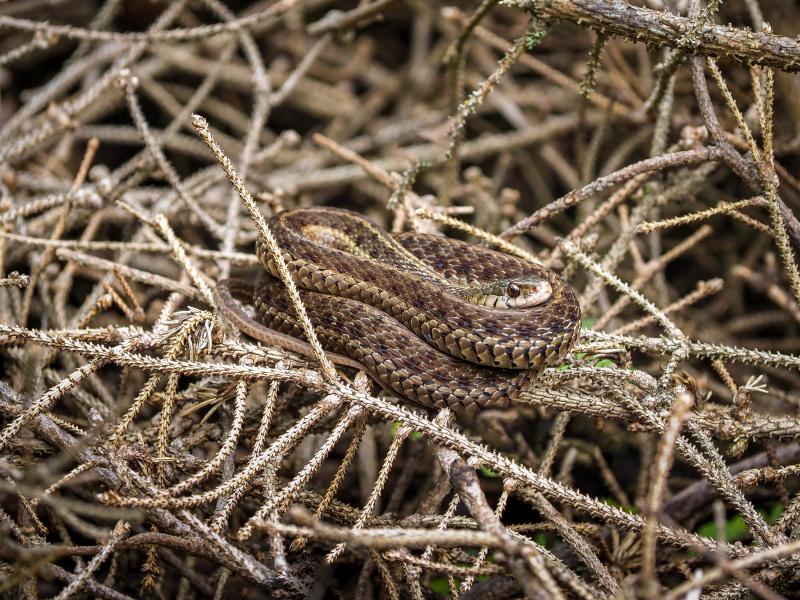Jennifer Galas
Jennifer's fascination with garter snakes began in the summer of 2021 when she spotted one sunning itself on the stone wall in her back yard. She found that photographing them gives her an intimate view into the lives of native garter snakes, allowing her to closely observe their unique features, behaviors, and interactions.
She uses a digital mirrorless camera and a variety of macro lenses to make the highly detailed closeup images.
Harmless to humans, garter snakes are assets to any garden or property. They help control populations of rodents, slugs, and other pests, which in turn reduces the number of insects and arachnids—such as ticks—that cause harm to humans. Garter snakes are highly adaptable to different habitats, and as both predator and prey are an important component of any ecosystem.
Sunbathing
Snakes are ectotherms ("cold-blooded" animals), and temperature affects every aspect of their lives. Unlike mammals and birds, they cannot regulate their temperature by using internal heat generated by metabolic activity. Instead, snakes vary their locations and behaviors to maintain a proper body temperature. The behaviors include basking in the sun on cool days, seeking shade on hot days, and huddling with other snakes during the winter.
Scales
Snakes' bodies are covered in scales, hardened folds in the outer layers of the skin. In addition to providing protection for the snake's body, scales aid in locomotion, allowing the snake to precisely control the amount of friction needed to move along a particular surface. Garter snakes have keeled (ridged) scales, which are thought to help with camouflage.
Up Periscope!
Snakes can raise the front part of their bodies straight and high into the air, a behavior called periscoping. In addition to the information they gain through their other senses, periscoping gives snakes a better view over obstacles in their path, and it helps them detect predators and prey.
Friends and Neighbors
While snakes of many species are thought of as solitary, garter snakes have well-documented social interactions. They brumate (overwinter) in groups of hundreds of snakes, and interact both in the fall when they return to their brumation sites, and again in the spring when they emerge to mate. Garter snakes have been observed and documented to have preferred "friends" with whom they seek interaction.
Open Wide
Similarly to tongue flicking, yawning allows a snake to gather chemical cues from its environment. But snakes also yawn to adjust their jaws before or after a meal, which they swallow whole. A garter snake's diet is dependent on where it lives, but generally they eat earthworms, slugs and snails, small frogs, and small rodents.
Baby Grand
Unlike most snakes, which lay clutches of eggs, garter snakes are ovoviviparous: they bear live young from eggs that are incubated inside the snake's body. Although the extremes are uncommon, a garter snake may produce between two and 100 babies per season! Garter snakes of the same species, even from the same litter, display a wide variety of colors and patterns.
Snake Eyes
This snake's opaque blue eye scales indicate that it is ready to shed its skin. Snakes shed their skins several times per year as they grow. Just before the snake is ready to shed, fluid builds up to loosen the outer layer of skin, which causes the blue appearance of the eyes. Their reduced vision makes snakes more vulnerable to predation, so during the pre-shedding period, they tend to remain hidden.
I'm More Afraid of You …
Snakes typically rely on camouflage and their ability to stay out of sight, and will move away quickly from a potential threat. Only when cornered will they engage in active defensive behaviors such as bluffing, musking, displaying teeth, or, usually as a last resort, striking. Common predators of snakes are carnivorous mammals such as raccoons, foxes, and domestic cats; birds of prey such as hawks; and even other snakes!
By the Flicking of My Tongue …
Snakes flick their tongues to detect scents in their environment. Their tongues retrieve chemical particles from the air and the ground and deliver them to the snake's mouth, where the vomeronasal (Jacobson's) organ is located. This organ detects pheromones and other chemical signals, and the forked nature of the tongue allows the snake's brain to determine the distance to prey items and other snakes.
All Images © 2023 Jennifer Galas
